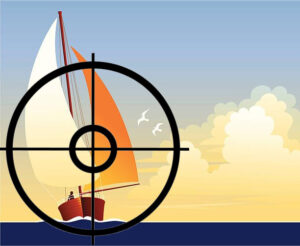
Following the action taken by the Port Autonome Police to evict sailboats anchored in front of the Intercontinental in Faa'a, and the publication of articles (Radio1 & la1ère, among others), the AVP took the initiative of going to the site to take a census of the sailboats present and to gauge the feelings of local yachtsmen.
The AVP met resident owners of sailboats of all sizes, tourists passing through with sailboats, wrecks, and people who can't or don't want to go anywhere else. There are around 60 boats involved, and this first approach enabled us to try and define each person's situation: tourists passing through (for what reason: medical, provisioning, repairs, no space elsewhere), resident-owners (for what reason, asked for a place?, not able to leave), inhabitants on a wreck, uninhabited wrecks, ...
(See the article and the report on anchoring on Radio 1).
As for the wrecks, Radio1 (https://www.radio1.pf/le-pays-engage-lenlevement-des-epaves/) and other media have reported on them, and we can only welcome this initiative to remove wrecks, which could surely have been carried out much earlier. Better late than never, let's rejoice in this action.
As for the rest of the inhabited boats (residents or tourists passing through), most of which are on waiting lists for marina and other moorings, they simply can't find a place. Nowhere. Often also because the smallest boats (around 30 feet) are not very profitable for the company that has delegated the public service: the waiting list is arbitrated according to size, since larger boats bring in more money.
This anchorage has been banned for years, but for a long time it was tolerated, even by the admission of the director of the Autonomous Port. It is now strictly forbidden because of the embankment project for the "Tahitian Village", the first shovelful of which has yet to be seen. So there's no absolute urgency.
- Could it be that the government has chosen the wrong date? The pleasure boats will be gone before the hurricane season.
- Didn't the government choose the wrong way? Favoring wealthy yachtsmen at the expense of smaller ones.
- Is the government on the wrong track? Boats, supposedly responsible for all the pollution, will be replaced by tons of fill, to the detriment of the lagoon's living environment, for the eventual construction of the famous "Tahitian Village".
There is a need for a buffer zone, tolerated by the Port Autonome for supplies and repairs. Tahiti is the transpacific hub for all tour-de-mondistes, whether it's for purchases of all kinds, formalities, access to aircraft, repairs and maintenance of yachts, day-to-day consumption, etc. This represents a significant financial niche. The study on the impact of yachting on the economy of French Polynesia showed that this niche was estimated at 4.77 billion XPF in 2020.
Sending this type of message at the height of the tourist season is clearly a bad signal for the yachting industry.
The Communauté des plaisanciers en Polynésie française (French Polynesian yachting community) is calling us to account for the "chaotic turn" (cf. the words of one yachtsman) that decision-makers are taking with regard to yachting in Tahiti and its islands. There are clearly major problems, especially concerning the number and location of moorings available. The "36 months" policy and the very low level of papeetization, for example, could have been very good things if the political will had continued in the same direction by developing the yachting sector (marina extension, moorings, introduction of a "cruisin permit", etc.). Instead, the stigmatization of the yachting community in French Polynesia has been growing for several years now.
We would therefore like to request an audience with the government to try to clarify the situation and discuss the future of yachting in French Polynesia. For your information, here are some initial thoughts on the letter we would send to the government:
"Sailboats in Polynesia have been grouped together in a users' association since 1981. We respectfully ask the government, and in particular its president, to receive a delegation from our association in order to participate in resolving the many problems encountered by this category of users, both locals and tourists.
This is particularly evident in the recent application of the mooring ban in the Punaauia area. We applaud the work of the Port Autonome in removing wrecks from the area, but its strict enforcement :
- leaves tourists who need to make a technical stopover in Tahiti helpless;
- leaves small pleasure boats without a solution, as they can't find space in marinas due to their low financial interest in them;
- forces local residents to find corpses far from their place of work.
We had to challenge the collective work of the Moorea PGEM before the administrative court, which partially ruled in our favor, leading to its suspension. But here, too, we have constructive proposals.
We'd be happy to put forward solutions to improve the organization of yachting and reduce the sources of conflicts of use. We are in favor of defending public maritime space and sharing it among all users, and we are working to ensure that fair laws recognized by all are known and applied. It is in this spirit that we would like to meet you.
Yours sincerely".
In conclusion, once again as the title of the La 1ère article quoted above points out, "Sailboats still in the firing line".
"Unfortunately, it's much easier to create mistrust than to find intelligent solutions. The Polynesian dream includes its maritime dimension and the tourism that goes with it, sailboats included." (A yachtsman reacting to recent events).
Far from feeling sorry for ourselves, we're going to have to get the authorities to understand how yachting in general works, because by combining "common sense", "cooperation" and "judicious decisions", there's a way of satisfying everyone.
Yachting has the potential to become an important economic niche in French Polynesia, but it needs to be understood, desired and properly developed.





